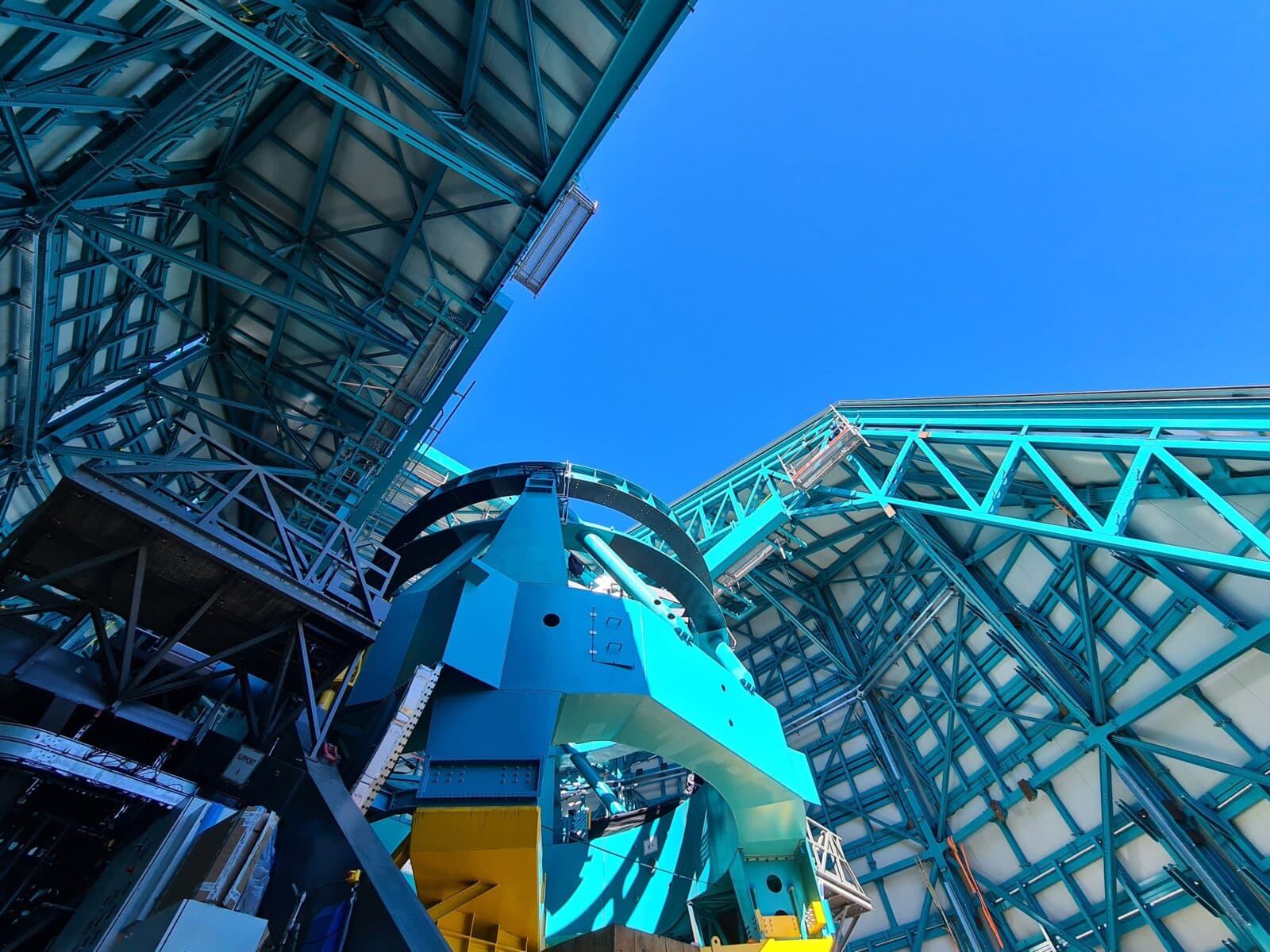Nabbing Fast and Furious Binary Systems
by Adam Hadhazy
Part 3 of our 'Looking Ahead to Rubin' series looks into how the observatory's survey will detect the explosive signatures of stellar remnants smashing together, setting the stage for future insights

The Author
Our understanding of the dynamics of the universe is about to be revolutionized, thanks to the Vera C. Rubin Observatory. Come 2024, this observatory is slated to begin its Legacy Survey of Space and Time (LSST), a campaign that will observe the full sky every three nights over the course of a decade. The survey will capture an unprecedented amount of astrophysical data, opening our eyes to the cosmos as never before.
Groups of researchers worldwide have banded together in forming science collaborations to provide scientific expertise for the Rubin Observatory. Many Kavli Institute-affiliated researchers belong to these science collaborations. This article is the third in a series profiling these researchers and the advances they expect the groundbreaking observatory will deliver.
When gazed upon by human eyes, the night sky seems a steady, sedate place—awe-inspiring, for sure, but seemingly just a collection of hundreds upon hundreds of points of distant light. When scrutinized by highly sensitive detectors, however, that gather faint light far beyond the limited capabilities of the Homo sapiens visual system, the night sky is revealed as an astrophysical frenzy. Light of wildly ranging energies and quantities pours in from all over, and not just as even, continuous radiance, but also as rapid bursts and swells.
Getting a better handle on this ephemeral, roiling universe is one of the goals of the Rubin Observatory LSST. Working on achieving this goal is the Transients and Variable Stars (TVS) Science Collaboration. The group will study transients—the term for astrophysical events that happen over limited time periods—and variable stars, a class of stars whose brightnesses change for a rich variety of reasons. With its pan-sky and impressive temporal coverage, the LSST is going to gather up loads of scientifically valuable transient and variable star data.
Eagerly awaiting these data is Kevin Burdge, a member of TVS. His research focuses on a particularly dramatic kind of fast-changing astrophysical system known as a short orbital period or ultracompact binary. In these systems, two objects whirl around each other in extremely tight, fast orbits that can last mere hours or even minutes. The objects involved are highly dense stellar remnants, the leftovers of aged stars. The remnants include white dwarfs, which form from stars like our sun, as well as the even-more-tightly-packed remnants of massive stars known as neutron stars and black holes.
The fate of the stellar remnants in ultracompact binary systems is to eventually smash together and trigger cataclysmic explosions. Those explosions not only unleash light that space- and ground-based telescopes can capture, but also the ripples in spacetime—known as gravitational waves—that humanity just gained the ability to capture in 2015 with the LIGO observatory.
"These binaries are super-exciting because they are what we call 'multi-messenger sources,' in the sense that they emit both visible light and gravitational waves," says Burdge, "These objects are also amazing because we can actually see the rate at which they are merging."
Burdge is a postdoctoral scholar at the Massachusetts Institute of Technology's Kavli Institute for Astrophysics and Space Research, the home institution of Rainer Weiss, one of the leaders of LIGO and a laureate of the 2016 Kavli Prize in Astrophysics, and the Nobel Prize the following year. With LIGO, Weiss and his colleagues blazed the trail for gravitational-wave astronomy. In the late 2030s, a descendant of LIGO that will be sensitive to a whole different range of waves than LIGO is the Laser Space Interferometer Antenna (LISA). Intended as the first space-based gravitational-wave array, LISA should be able to detect the ripples from colliding ultracompact binaries. In this way, LISA will add crucial data to the anticipated massive database of ultracompact binary systems that LSST will compile over its planned decade of observations.
"LSST is exciting because it should increase the number of such binaries by at least tenfold," says Burdge. "The data it collects over the next 10 years is going to be absolutely amazing once we have LISA data, because then we'll be able to go back and match up a bunch of new gravitational wave sources."
Doing so should yield incredibly precise parameter estimates on the ultracompact binaries, Burdge says. That, in turn, will enable scientists to probe fundamental physics and answer many outstanding astrophysical questions about these extreme systems.
Setting up the pipeline for bringing LSST and LISA data together neatly represents a melding of Burdge's academic interests. In graduate school, he had started in a research group centered on atomic, molecular, and optical physics, which involves investigating the interactions between light and matter. Around that time, LIGO's breakthrough initial detection of gravitational waves from merging black holes stunned the scientific world and inspired Burdge to then delve into astrophysics. Intersecting the fields of studying light and gravitational waves has proven to be a very enjoyable experience for Burdge. "It's been incredibly fun and productive ever since!" he says.
Burdge looks forward to pouring over LSST's ample observations of short period, ultracompact binaries in due time (no pun intended). "The key with LSST for this science is that it goes very deep, so that it can collect light from tens of billions of sources, but still has a field of view big enough that it collects enough measurements at each part of the sky to probe for this short timescale behavior," Burdge says. "That puts LSST in a position to blow past most previous surveys."